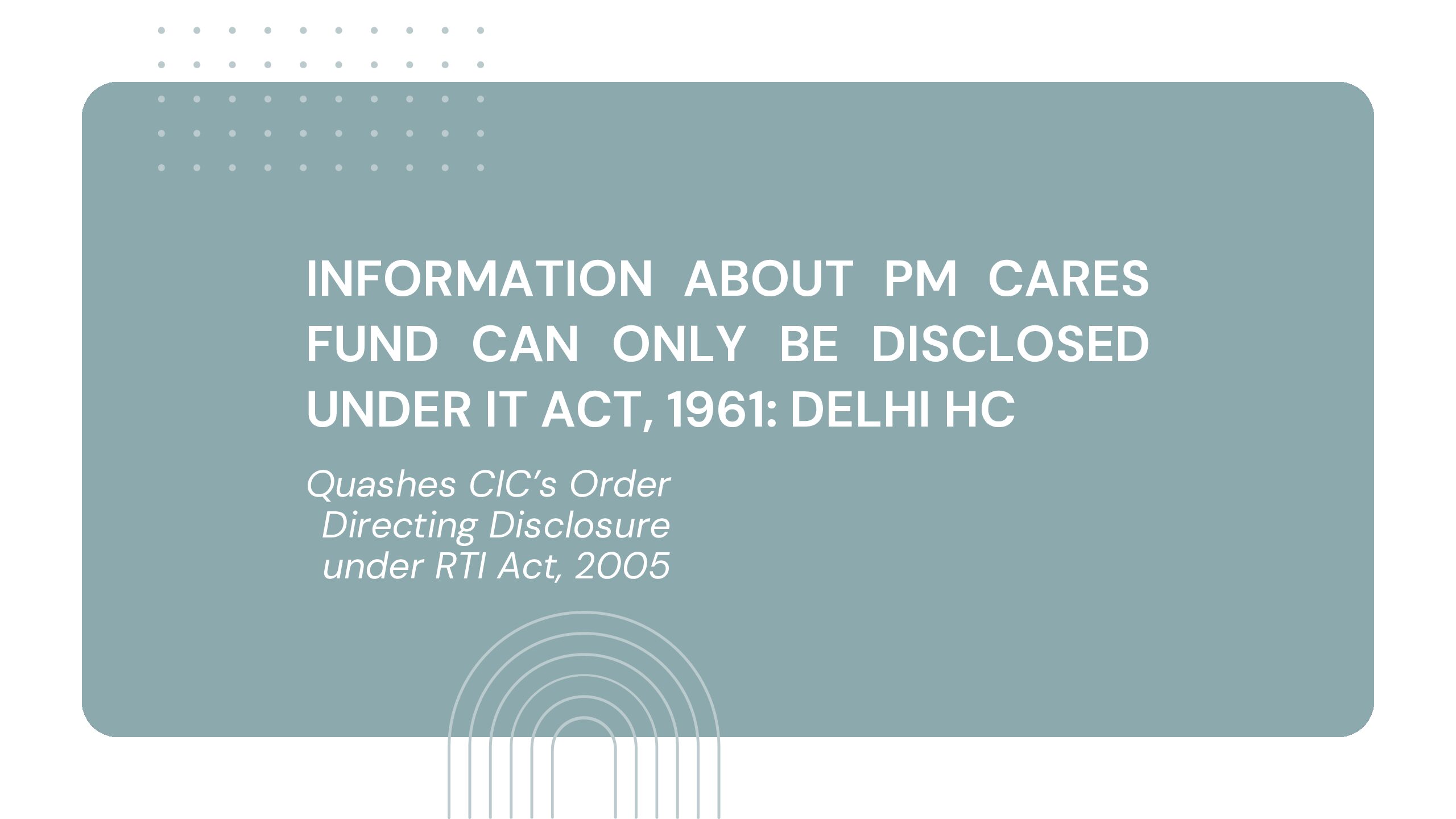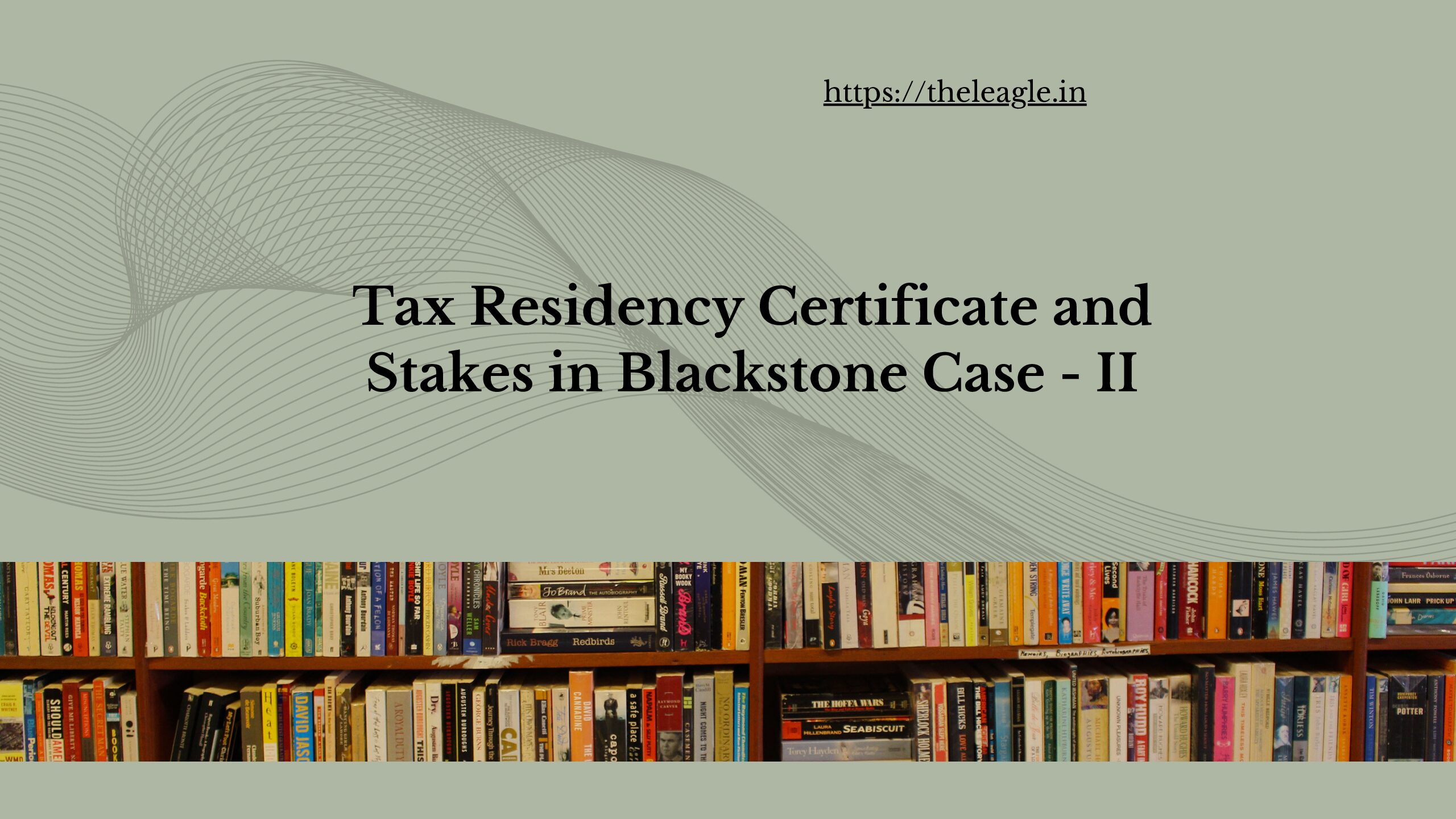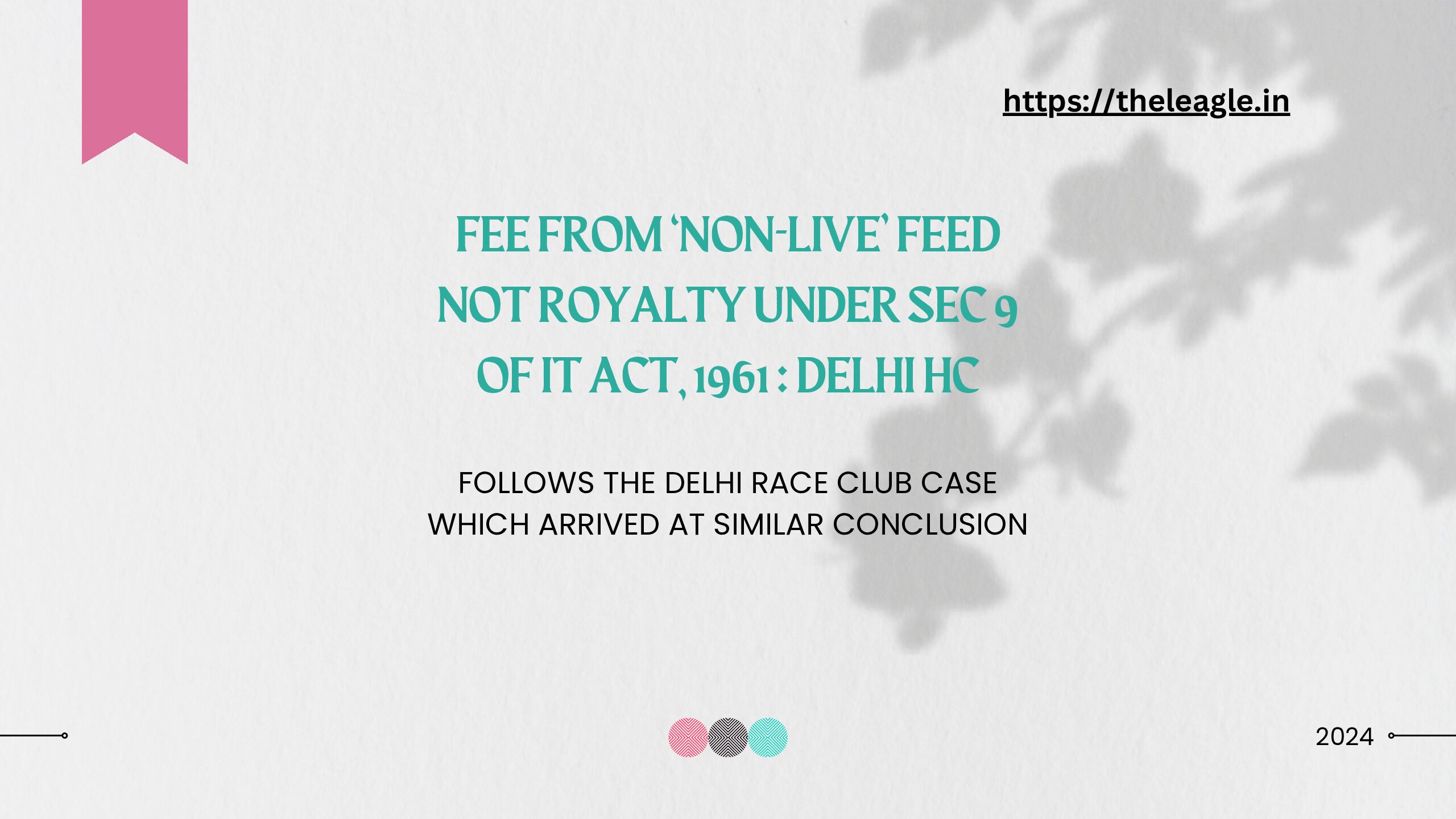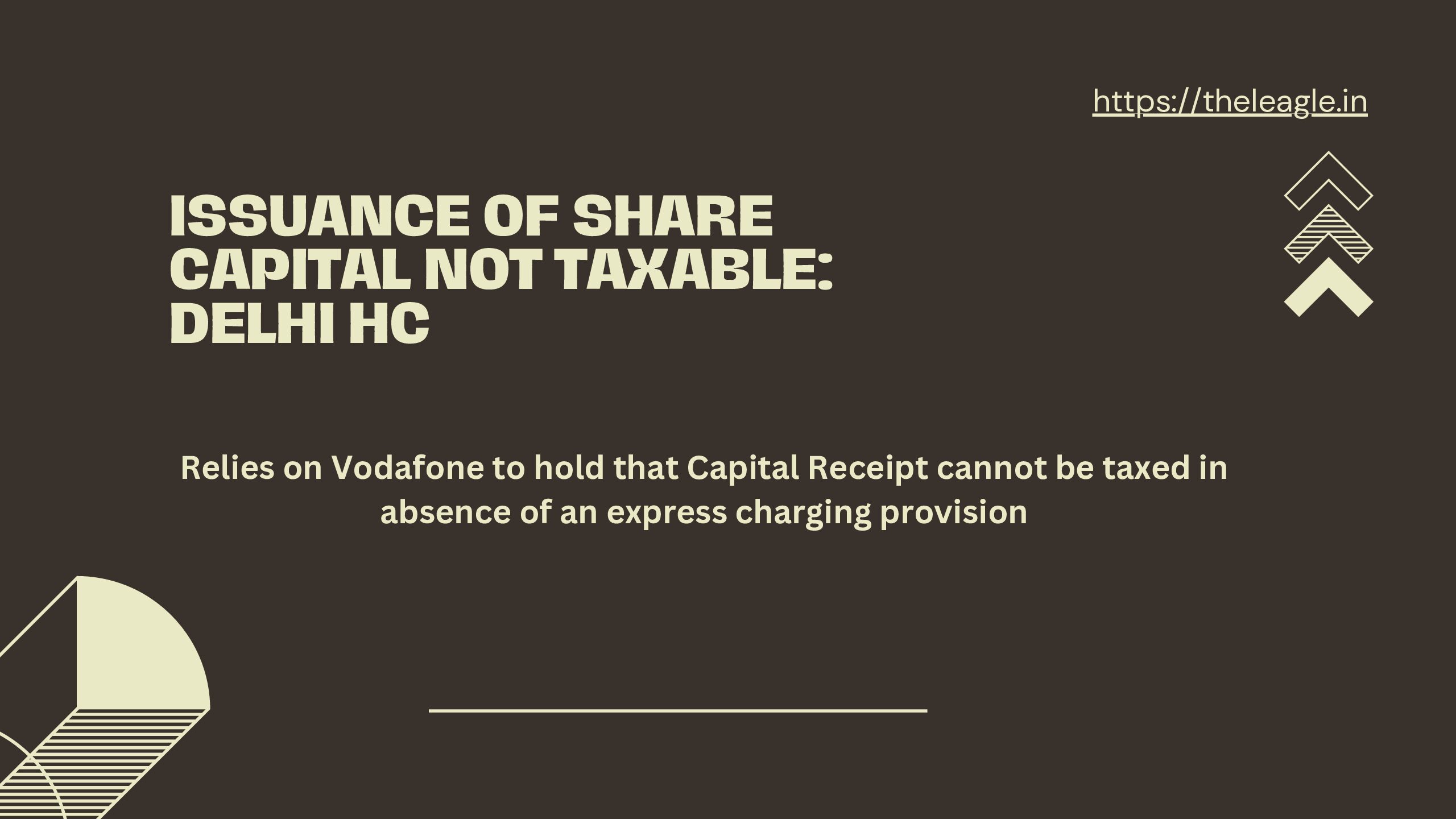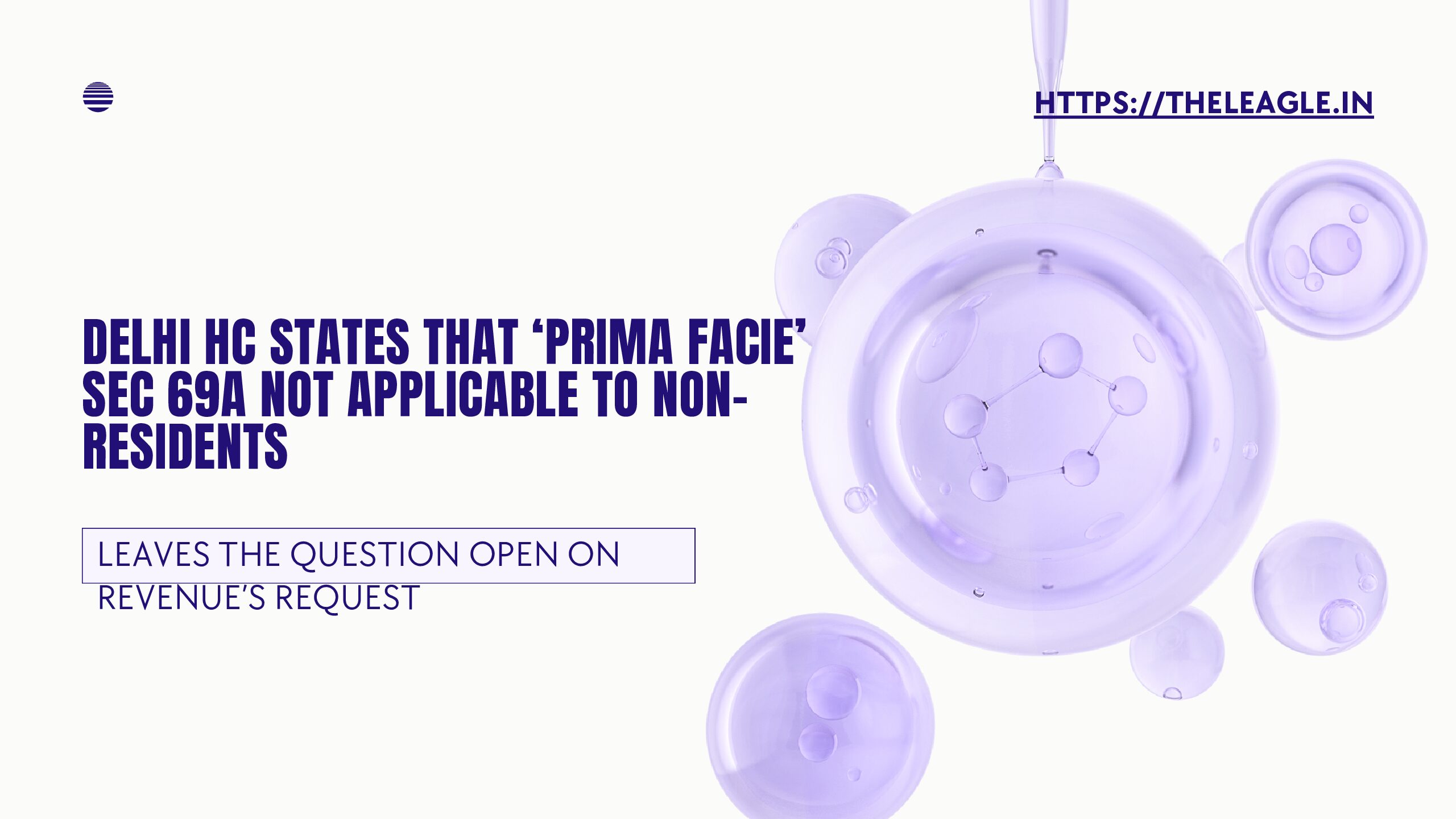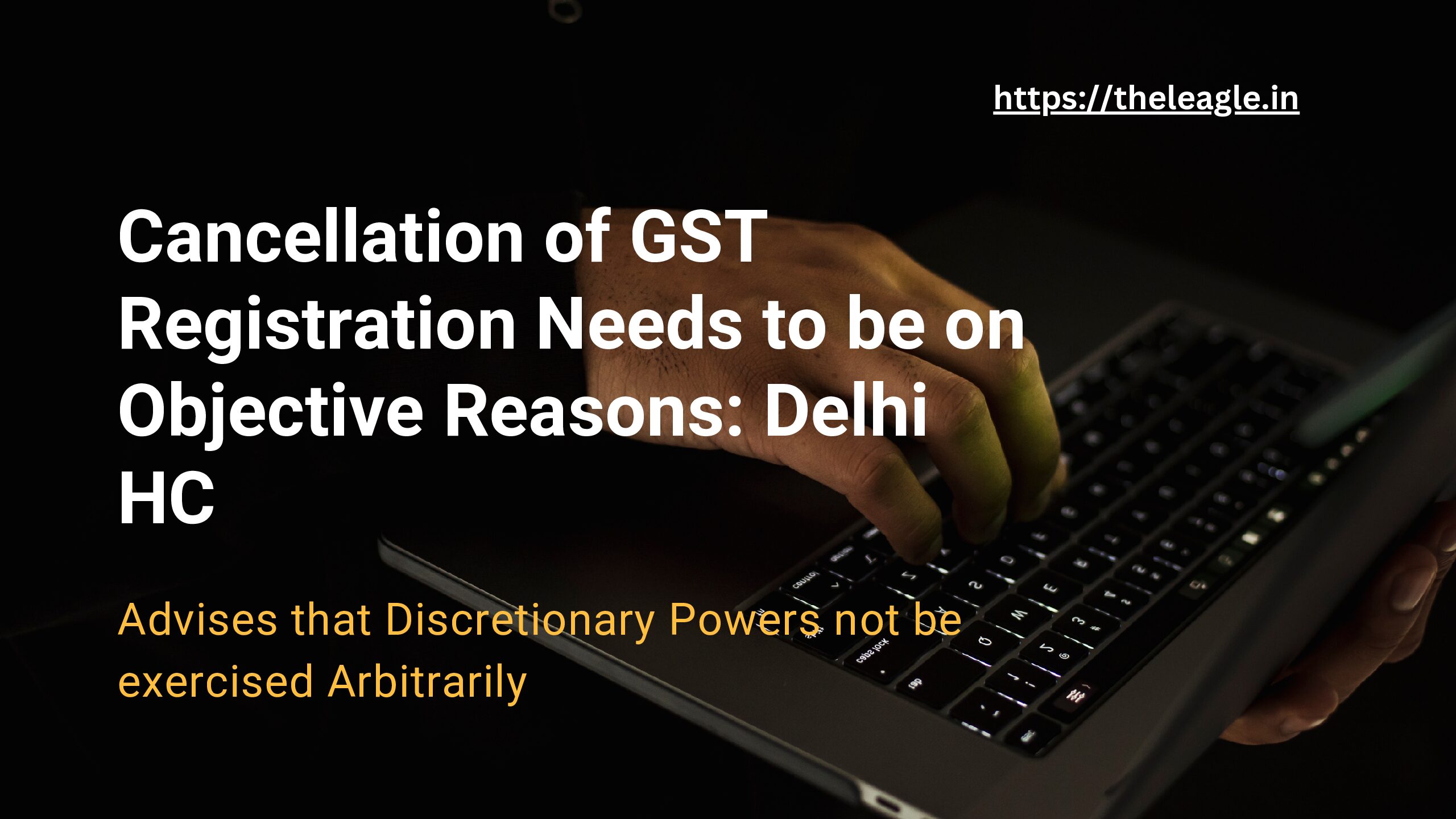The Delhi High Court in a recent judgment allowed the Income Tax Department’s appeal against the Central Information Commission’s (‘CIC’) order directing the respondent be provided copies of all documents submitted by PM Cares Fund to obtain exemption under Section 80G of the IT Act, 1961. The Delhi High Court’s main reason was that the IT Act, 1961 was a special legislation vis-à-vis the RTI Act, 2005 and provisions of former would prevail in matters relating to disclosure of information of an assessee. The High Court concluded that information relating to an assessee can only be disclosed by the authorities prescribed under Section 138 of IT Act, 1961 and CIC does not have jurisdiction to direct furnishing of information of an assessee.
Brief Facts
PM Cares Fund is a charitable fund which was established to provide relief to the public during COVID-19 and other similar emergencies. The Income Tax Department had granted exemption to PM Cares Fund under Section 80G of the IT Act, 1961 on 27.03.2020. The respondent wanted to know the exact procedure followed by the Income Tax Department in granting a swift approval to the PM Cares Fund and whether any rules or procedure were bypassed by the Income Tax Department in granting the approval. On 27.04.2022, the CIC via its order had directed that the respondent be provided copies of all the documents submitted by PM Cares Fund in its exemption application and copies of file notings approving the application. The Income Tax Department approached the Delhi High Court challenging the CIC’s order.
The Income Tax Department’s primary contentions were that information of an assessee relating to income tax can only be sought under Section 138, IT Act, 1961 and not RTI Act, 2005. And that information sought by the respondent is exempt under Section 8(1)(j) of RTI Act, 2005, i.e., it is personal information, and further that CIC could not have directed disclosure of information without providing an opportunity of hearing to PM Cares Fund. (para 2-5)
The respondent, on the other hand, argued that the non-obstante clause in Section 22, RTI Act, 2005 ensures that it will have an over-riding effect over other statutes for the time being in force. Further that if there are two methods for obtaining information, there was no bar in seeking information under either of the methods. The respondent also argued that the bar of Section 8(1)(j) would not apply as the information sought is not personal information but there is an overriding public interest in disclosing the information. (para 6)
Reasoning and Decision
The Delhi High Court’s primary reasoning related to the ‘inconsistency’ between the IT Act, 1961 and RTI Act, 2005 due to non-obstante clauses contained in both the statutes. It is apposite to cite Section 138 in entirety to analyse the the Delhi High Court’s reasoning.
138. (1)(a) The Board or any other income-tax authority specified by it by a general or special order in this behalf may furnish or cause to be furnished to—
(i) any officer, authority or body performing any functions under any law relating to the imposition of any tax, duty or cess, or to dealings in foreign exchange as defined in clause (n) of section 2 of the Foreign Exchange Management Act, 1999 (42 of 1999); or
(ii) such officer, authority or body performing functions under any other law as the Central Government may, if in its opinion it is necessary so to do in the public interest, specify by notification in the Official Gazette in this behalf,
any such information received or obtained by any income-tax authority in the performance of his functions under this Act, as may, in the opinion of the Board or other income-tax authority, be necessary for the purpose of enabling the officer, authority or body to perform his or its functions under that law.
(b) Where a person makes an application to the Principal Chief Commissioner or Chief Commissioner or Principal Commissioner or Commissioner in the prescribed form48 for any information relating to any assessee received or obtained by any income-tax authority in the performance of his functions under this Act, the Principal Chief Commissioner or Chief Commissioner or Principal Commissioner or Commissioner may, if he is satisfied that it is in the public interest so to do, furnish or cause to be furnished the information asked for and his decision in this behalf shall be final and shall not be called in question in any court of law.
(2) Notwithstanding anything contained in sub-section (1) or any other law for the time being in force, the Central Government may, having regard to the practices and usages customary or any other relevant factors, by order notified in the Official Gazette, direct that no information or document shall be furnished or produced by a public servant in respect of such matters relating to such class of assessees or except to such authorities as may be specified in the order. (emphasis added)
The non-obstante clause of RTI Act, 2005, contained in Section 22, states as follows:
The provisions of this Act shall have effect notwithstanding anything inconsistent therewith contained in the Official Secrets Act, 1923 (19 of 1923), and any other law for the time being in force or in any instrument having effect by virtue of any law other than this Act. (emphasis added)
In my view, the Delhi High Court’s framing of the issue – non-obstante clauses in IT Act, 1961 and RTI Act, 2005 are inconsistent and seemingly in conflict with each other – is erroneous. The non-obstante clause of Section 138(2), IT Act, 1961 overrides only Section 138(1) while Section 22, RTI Act, 2005 overrides every other law for the time being in force. Section 138(2) empowers the Central Government, by an order notified in the Official Gazette, to circumscribe or prevent powers of officers to disclose information under Section 138(1). Section 138(2) cannot be read so say that IT Act, 1961 will override all other laws in matters relating to disclosure of information relating to an assessee. In fact, it is Section 22 of RTI Act, 2005 which states that it will override all other statutes. While both provisions use non-obstante clauses, their scope and effect is different and there is no direct conflict of the manner suggested by the High Court.
By framing the issue as that of ‘conflict’ of two non-obstante clauses, the Delhi High Court then had to necessarily answer as to which Act would prevail. The High Court was of the opinion that IT Act, 1961 is a special legislation governing all provisions and laws relating to income tax and super tax in the country. While RTI Act, 2005 is a general legislation to enable citizens to exercise and enable their right to information. The High Court did not give too much importance to the dictum that latter legislation prevails over the earlier legislation. The High Court opined that the date on which statutes come into force cannot be the sole deciding factor in determining the application and overriding effect of a legislation, and that in its opinion it is more important that the special legislation, i.e., IT Act, 1961 should prevail over the general legislation, i.e., RTI Act, 2005. Which factors need to be accorded more importance is of course is the discretion of the judges. In this case, the High Court was of the view that the dictum of special legislation should prevail general legislation is of primary importance; the question though arises is: is it a straightforward answer that IT Act, 1961 is a special legislation and RTI Act, 2005 a general legislation?
The Delhi High Court cited some precedents to this effect which have held that whether a statute is a general or special statute depends on the principal subject-matter and particular perspective. And a legislation can be a general legislation for one subject matter and a special legislation for others. For example – and as cited by the High Court in its judgment – in LIC v DJ Bahadur case, Supreme Court had observed that in matters of nationalisation of LIC the LIC Act is the principal legislation while in matters of employer-employee dispute, the Industrial Disputes Act, 1948 is the principal legislation. Applying this dictum, the High Court made a defensible conclusion that in matters relating to disclosure of information of assessees relating to income tax, IT Act, 1961 is the principal legislation while RTI Act, 2005 is the general legislation.
Finally, the Delhi High Court made another observation that, in my view, is not an accurate reading of Section 138. After noting that Section 138, IT Act, 1961 provides a special procedure for disclosure of information, the High Court observed:
Applying the said analogy to the facts of the present case, Section 138(1)(b) of the IT Act which specifically states that information relating to an assessee can only be supplied subject to the satisfaction of Principal Chief Commissioner or Chief Commissioner or Principal Commissioner or Commissioner, as the case may be, would prevail over Section 22 of the RTI Act. (emphasis added) (para 18)
The inaccuracy of the Delhi High Court’s observation is in supplying the word ‘only’ to Section 138. It is trite that in tax jurisprudence, that provisions of a tax statute are to be construed strictly. And strict interpretation of provisions of a tax statute requires that a provision be read as is, without adding or subtracting any words from it. The Delhi High Court in adding the word ‘only’ to Section 138 (1)(b) departed from the doctrine of strict interpretation of tax statutes and for no good reason. The observation that a special legislation – IT Act, 1961 – prevails over the general legislation – RTI Act, 2005 – cannot form basis of the conclusion that information can ‘only’ be provided under the special statute. A bare reading of Section 138 does not support the High Court’s interpretation.
Conclusion
The Delhi High Court’s observations in the impugned case are on shaky grounds. The only defensible part of the judgment is that a special statute prevails over a general statute, but as I argue that issue only arises because the High Court erred in framing the headline issue as that of conflict of non-obstante clauses, when the non-obstante clauses in question have differing scopes and do not necessarily clash. The result is that PM Cares Fund continues to enjoy a certain level of opaqueness that is, in my view, not in public interest. And for the meanwhile, Delhi High Court’s deficient reasoning has provided the opaqueness a convenient legal cover.
